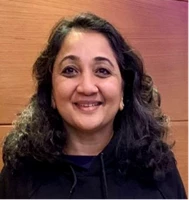
“I want to be a doctor when I grow up. I want to help people like the doctor at the hospital who helped my mother” said the little eight-year old girl, full of confidence. She was one of about 50 children attending a primary school in Tahtay Adiabo Woreda in Tigray. The little girl was talking to a World Bank team visiting the area and the Development Response to Displacement Impacts Project (DRDIP).
The DRDIP is a regional program in the Horn of Africa covering Djibouti, Kenya, Uganda and Ethiopia. It seeks to mitigate the social, economic and environmental impacts of protracted presence of refugees on host communities.
Ethiopia alone hosts more than 900,000 refugees displaced by conflicts, political events, and civil wars in neighboring countries. And, an estimated 500,000 Ethiopians have been displaced due to internal conflict, and are living in situations of protracted displacement, many of them children. Improving access to basic social services, including education, health, and water, is an important objective, as it helps promote inclusive growth for both refugees and host communities.
One could completely miss the existence of the school where four temporary classrooms were created using hay and brushwood (called Das in the local language), with stones and logs as benches. However, there was a real seriousness on the faces of the children attending the school and their teacher. They seem undeterred by the circumstances. When asked about the challenges faced, one of the kids spoke up – “We will be getting a nice school soon and Dr. DIP (DRDIP) will be supporting its construction” and pointed to the heaps of sand and stone that the community has contributed for construction of the school.
Once we learned about the significant need for rehabilitation of existing primary schools we decided to follow up in person. Discussions with parents, teachers and students all confirmed the priority this community placed on the education of the children. They had prioritized the rehabilitation of the primary school above all else, since the structure and teaching conditions were dire. We were informed that the number of children attending the school would also increase once the new school was built with more space to accommodate the children who were currently out of school. The Kebele Development Committee also pledged to ensure that no child would be left out of school.
This visit and these interactions inspired us, and clearly demonstrated that the project is on the right path – helping young children attend proper schools which are equipped with the basic amenities for a quality education. And, we hope that projects like the DRDIP will, help them truly believe that their dreams could come true!



Join the Conversation